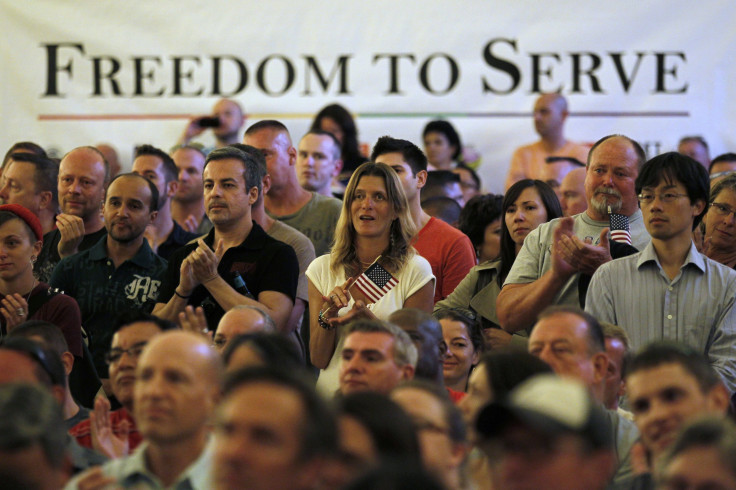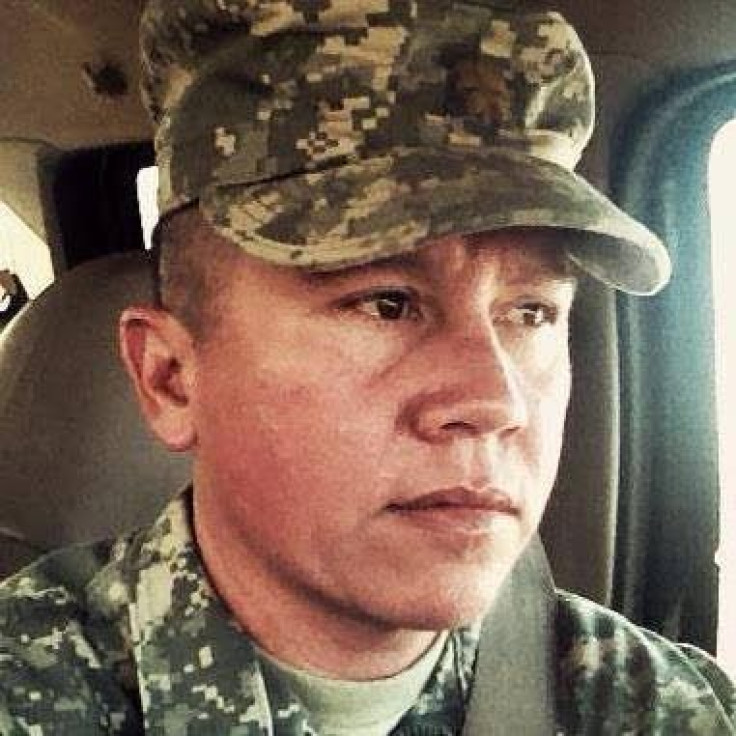Pentagon Transgender Decision Will Come With Challenges And Pushback From Veterans

The first sign of trouble came when U.S. Army cadets began calling her “Sir.” Even going to the bathroom became a possibly career-ending task.
But the new salutation used by the cadets was both an unexpected and dangerous gift. On the one hand, it offered retired Army Maj. Evan Young, who served in the military as a woman and is now a transgender man, the first glimpse into the life that she had craved for so long. On the other hand, it created confusion among the people she was supposed to lead and raised suspicion among her superiors that she was becoming a transgender man.
Young’s military colleagues at the University of Michigan’s Army Reserve Officer Training Corps believed they were serving alongside a woman. But cadets who were going through training thought that Young, who had begun a course of powerful hormones and whose appearance was changing rapidly, was a man.
“I didn’t realize that the testosterone was so strong and that my body would be changing in front of my command so quickly,” said Young, who started hormone treatment while in the last two years of a 15-year term of service and honorably retired from the Army in 2013. “I became isolated and hid in my office as much as I could.”

Young’s difficult transition while in the military mirrors the challenges faced by transgender people across the U.S. eager to serve their country, but who are unable to openly do so under federal directives. That could soon change. The Pentagon announced last Monday it would undertake a six-month review looking at the challenges of integrating transgender personnel into the armed services. The proposal has been applauded by many who see the move as long overdue and the latest evolutionary chapter in the military’s long history of embracing minority cultures. But the concept has also drawn mixed reactions from some who argue that the added challenges of addressing changing combat roles, standards of dress, unique medical needs, physical training and issues around living quarters for transgender troops could harm the military’s effectiveness and endanger lives.
Chuck Dare, a veteran of the Vietnam War and the president of American Legion Post 42 in Gatesville, Texas, said allowing transgender people to serve in the military is “bull----. It just ain’t right.” He posed the questions: “What about the practicalities of having former men dressed as women in male barracks and vice versa? And what about the separate standards of military fitness and uniform?”
In contrast, Ted Stephens, CEO of Veterans Helping Veterans of America Inc., based in Durham, North Carolina, said transgender troops would constitute a problem only if people’s mindsets are still stuck in the 1960s. “A transgender person can save your life just the same way as anyone else can,” said Stephens, a black man who said he faced discrimination when an officer told him during his first weeks of duty in Vietnam that he didn’t like n------. “I thanked him for his honesty, because it meant that I knew to stay out of his way, and I imagine secret transgender personnel probably have a similar way of looking at things,” he said.
“You’re just trying to survive,” Stephens said.

Embracing transgender troops would be a big step for the U.S. armed forces, which as recently as 2011 operated under a federal policy that banned gays and lesbians from serving openly in the military. Transgender personnel weren’t covered by the change embodied in the Don’t Ask, Don’t Tell Repeal Act of 2010, so people in transition are banned from serving, forcing many who still insist on joining the military into precarious and secret existences. Under current military regulations, transgender people could be first listed as medically unfit for service and then honorably discharged if diagnosed with what’s described under Defense Department rules as “psychosexual conditions, including but not limited to transsexualism, exhibitionism, transvestism, voyeurism, and other paraphilias.”
Despite the current directives, an estimated 15,000 transgender people are believed to be serving in the military. Many must secretly carry their own hormone treatments with them when deployed to combat zones, activists said.
Brenda Fulton, a 1980 graduate of West Point and the chair of Sparta, an advocacy group for lesbian, gay, bisexual and transgender people in the U.S. armed forces based in Washington, said there will certainly be some struggles when the change is eventually made.
“The process that the military will need to go through, which is similar to that of the 18 other countries that allow transgender people to serve openly, is they will need a determine early when that service member will switch from following male standards to female standards,” Fulton said. “So you talk about where are they going to live, what PT [physical training] standards will they be held to, what about their uniforms and hair.”
According to Fulton, who described being targeted by her commanders as a lesbian during her service in the 1980s, those issues will have to be addressed with each individual’s commander and based on the needs of the individual and the needs of the unit. But critics’ questions about how transgender personnel will receive hormone treatment when in combat zones or how a transgender man will meet the higher physical training standards expected of men, can be easily answered, she said.
The hormones are already carried by the military and used for other medical issues, Fulton said. As for issues centered on the physical differences between men and women, she pointed to women who are already serving in Army Ranger School as evidence that women can do the same jobs as men.
The military has struggled to end its discriminatory policies in the past. In 1949, Kenneth Claiborne Royall, then the army secretary, was forced into retirement for refusing to desegregate his service after President Harry S. Truman signed an executive order directing him to do so. A defiant Royall said the change would place U.S. troops in greater danger than they were in before. Another landmark change came 15 years later, when Defense Secretary Robert S. McNamara was directed to ensure that the military no longer discriminated based upon sex or race: This move involved shutting down male- and white-only bars and clubs on military bases.
When the U.S. military’s 18-year ban on gay and lesbians serving openly in the military under its Don’t Ask, Don’t Tell (DADT) policy was repealed in 2011, the change attracted widespread criticism, both within the ranks and across the country. The Center for Military Readiness, a group specializing in social issues in the military based in Livonia, Michigan, said at the time the new policy would “impose heavy, unnecessary burdens on the backs of military men and women.” Likewise, U.S. Sen. John McCain, R-Ariz., who served in U.S. Navy during the Vietnam War and was held captive for five and a half years, said in 2011 that the policy’s repeal would “harm the battle effectiveness vital to the survival of our young men and women in the military.”
However, those fears have never been realized. A CBS poll conducted before the policy was repealed in 2011 found that about 50 percent of Americans supported allowing gay and lesbians to serve openly in the military. Since then, there have been no significant issues. The Palm Center, a San-Francisco-based think tank with a focus on gender and sexuality issues in the armed forces, published a study in 2012 that noted the repeal of the DADT policy had no overall negative impact on military readiness or its component dimensions, including cohesion, recruitment, retention, assaults, harassment or morale. The study was conducted by a team of scholars that included some from the U.S. Air Force Academy, U.S. Marine Corps War College, U.S. Military Academy and U.S. Naval Academy.
Retired Army Maj. Young, now 45, said he spent almost a decade deflecting investigations and questions about his sexual orientation as a lesbian before the DADT policy was repealed. “It tore me apart inside that I couldn’t be my authentic self,” he recalled.
The military openly accepting transgender people is a new step toward equality for all troops, Young said. “It’s not just transgender people that are being inspired by this change,” he said. “It’s anyone that has ever faced discrimination in the U.S. military.”
© Copyright IBTimes 2024. All rights reserved.












